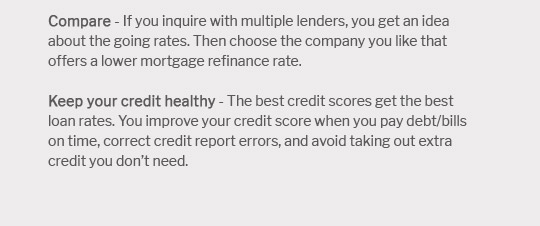 |
|||
 |
 |
 |
 |
|
|---|---|---|
 |
 |
|
 |
 |
|
 |
 |
 |
 |
Understanding Today's FHA Rates: Important ConsiderationsIn the ever-evolving landscape of real estate, one aspect that consistently captures the attention of potential homeowners and financial experts alike is the fluctuation of FHA rates. These rates, pivotal in determining the affordability of a home loan insured by the Federal Housing Administration, have a profound impact on the decisions of millions across the United States. As of today, understanding these rates requires not only a grasp of the current numerical values but also an appreciation of the factors influencing them and their implications for various demographics. The FHA, established during the Great Depression, has long been a cornerstone of American homeownership, offering insurance to lenders in order to make loans accessible to more people. Today's rates are influenced by a myriad of factors including the broader economic environment, federal monetary policy, and specific borrower characteristics. For instance, a borrower's credit score, loan amount, and down payment can all play significant roles in determining the rate they are offered. Currently, FHA rates are generally considered competitive, especially when compared to conventional loans. This is particularly beneficial for first-time homebuyers or those with less-than-perfect credit, who might find it challenging to secure favorable terms through traditional lending avenues. However, it's crucial to note that while the allure of lower interest rates is strong, potential borrowers must also consider the accompanying costs such as mortgage insurance premiums which are a staple of FHA loans. From an economic standpoint, the role of the Federal Reserve cannot be overstated. Interest rates set by the Fed indirectly influence FHA rates, as lenders adjust their offerings in response to shifts in federal policy. In recent months, discussions about inflation and economic recovery have been at the forefront, with many speculating on the Fed's next moves. As such, those considering an FHA loan should stay informed about federal economic announcements as they can lead to significant changes in borrowing costs.
In conclusion, while today's FHA rates are generally favorable, they are subject to change based on a range of factors. Prospective borrowers should not only focus on the current rates but also consider their personal financial situation, future economic projections, and how these elements intertwine to affect their long-term financial health. As always, consulting with a financial advisor or mortgage professional can provide personalized insights, ensuring that the decision to pursue an FHA loan aligns with one's financial goals and capabilities. https://www.navyfederal.org/loans-cards/mortgage/mortgage-rates.html
From fixed- and adjustable-rate mortgages to home loan options that don't require a down payment, Footnote 2 we have a mortgage to fit your needs. https://www.pennymac.com/rates
Let a Pennymac loan expert uncover the best mortgage rate and savings tailored to you, so you can achieve your aspirations of home. https://www.bankofamerica.com/mortgage/mortgage-rates/
Chart data is for illustrative purposes only and is subject to change without notice. Advertised rate, points and APR are based ...
|
|---|